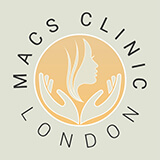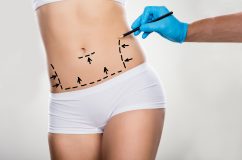Please select from the desired aesthetic treatment, if you don’t see what your looking for try using the search or get in touch with our team today!
ALL POST-MASSIVE WEIGHT-LOSS PROCEDURES
Facelift and Neck Lift
ALL, BODY SURGERY, COSMETIC SURGERY, FEATUREDt, POST-MASSIVE WEIGHT-LOSS
The soft tissue of the face and neck loses their elasticity and strength. This is compounded by the stresses of daily life, gravitational factors, exp
Correction of Gynaecomastia
ALL, BODY SURGERY, COSMETIC SURGERY, FEATUREDt, POST-MASSIVE WEIGHT-LOSS
‘Shirtless’ is a sign of masculinity Male Breast Reduction Surgery The medical term for male breast enlargement is gynecomastia, commonly
Upper Body Lift
ALL, BODY SURGERY, COSMETIC SURGERY, FEATUREDt, POST-MASSIVE WEIGHT-LOSS
Contact us on either 02070784378 or enquiries@macsclinic.co.uk for further information
Lower Body Lift Tummy Tuck (Abdominoplasty)
ALL, BODY SURGERY, COSMETIC SURGERY, FEATUREDt, POST-MASSIVE WEIGHT-LOSS
Contact us on either 02070784378 or enquiries@macsclinic.co.uk for further information
Thigh Reduction and Lift
ALL, BODY SURGERY, COSMETIC SURGERY, FEATUREDt, POST-MASSIVE WEIGHT-LOSS
Contact us on either 02070784378 or enquiries@macsclinic.co.uk for further information
Arm reduction/lift (Brachioplasty)
ALL, BODY SURGERY, COSMETIC SURGERY, FEATUREDt, POST-MASSIVE WEIGHT-LOSS
Arm reduction/lift – Brachioplasty Age and massive weight loss can sadly lead to sagging tissue on the upper arm when the arm is raised outward. Thi
Tummy tuck (Abdominoplasty)
ALL, BODY SURGERY, COSMETIC SURGERY, FEATUREDt, POST-MASSIVE WEIGHT-LOSS
Abdominal reduction- Abdominoplasty Nowadays more attention is directed to body consciousness and the size and shape of our bodies than ever before. I
Obesity is an increasingly common problem affecting one in every four adults. Obesity is the accumulation of excess fat. A person is diagnosed as clinically obese when they have a BMI of 35 or above. BMI is a tool which cross references height and weight in order to estimate the general health of a person.
Causes of obesity:
Obesity is often the result of a high calorie intake in conjunction with a sedentary lifestyle. Calories which are not burnt accumulate as excess fat in the body. Occasionally menopause, stress, anxiety, or lack of sleep may also factor in to the onset of obesity. Some medical complications, such as hypothyroidism, may contribute to the weight gain, although it can be controlled through prescribed medication.
Consequences of obesity:
There are two significant areas of difficulty associated with obesity:
Psychological problems- obese people can be at disadvantage in finding jobs, in relationships and in social situations. These problems can often lead to depression and isolation.
Health problems- osteoarthritis, atherosclerosis leading to coronary heart disease, heart disease, type 2 diabetes and some types of cancer, stroke, and sleeping and breathing difficulties.
Solutions for obesity:
Patients should increase their level of exercise alongside implementing a balanced and healthy diet. Goals should be set in terms of long-term results and it is often helpful to seek the support of friends, family and weight-loss groups. Stress management methods often contribute to this route of treatment. Weight loss medications may be taken to assist the weight loss. Once a patient reaches a reasonable BMI, if they are still unhappy with the results then they can consider surgical options.
Undesirable effects following massive weight loss:
The majority of patients may notice excess skin is left after massive weight loss, when the skin is unable to revert back to its original tight state because it has been stretched. The skin accumulates particularly in the neck, breast, thigh, back and tummy areas. Excess skin can be difficult to clean causing rashes and infections. This can cause the continuation of social embarrassment, as well as preventing the patient from showing their body when on holidays or in intimate relationships. The patient is still limited in many aspects of their life. However, the excess skin can be surgically removed by making incisions in such a way that it blends with the natural creasing of the body. The remaining skin is stretched and stitched giving a tighter appearance.
The plastic surgeon artistically removes excess skin and tightens muscles to improve the body contouring, keeping anatomical landmarks such as the nipples, belly button and external genetalia in their correct positions.
Available treatments:
A patient may undergo an upper body lift, lower body lift, thigh reduction, arm reduction, face lift, abdominoplasty, mastopexy (breast lift) and gynecomastia (male breast reduction).
During the operation the patient is under general anaesthetics and most surgeons would inject the operated area with long-acting anaesthetic solution. Patients are advised to take pain killers in the post operative period as and when required. In general it is not painful.
Any skin reduction procedure is going to leave behind a scar. Plastic surgeons plan the operation in such a way that scars merge with the natural creasing of the skin and are hidden under underclothing.
Yes, for a period of 4-6 weeks following body contouring surgery.
On an average, 3-5 operations are required. They are performed in more than one stage. Some of the operations can be combined together as a single procedure e.g. arm and thigh reduction.
Patients are given a full blood count, coagulation profile and MRSA swabs. Further tests may also be required.
Yes, patients are supplied with a course of antibiotics and tablets to relieve pain.
The patient should have reduced their body weight by a sufficient amount to optimise their BMI, and are advised to maintain a stable weight for a period of 6 months.
Patients are encouraged to mobilise from day one onwards to avoid possible complications of deep vein thrombosis and pulmonary embolism (blood clots developing in the legs and travelling into the lungs).
Yes, for a period of 4-6 weeks following body contouring surgery.










